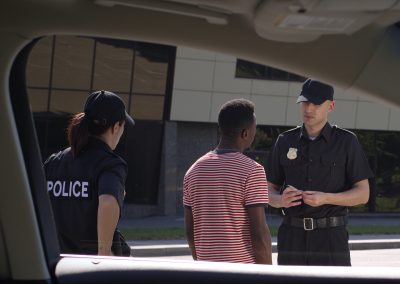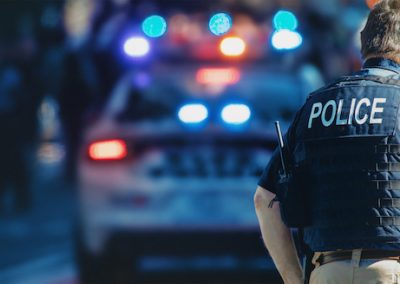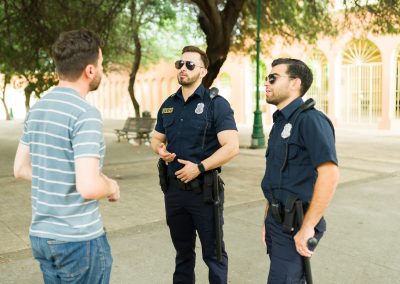The false line championed by people who have a national platform is that law enforcement spends most of its training time preparing its officers to be Warriors: Command-and-control-types who are always on the offensive, force-focused, and taught to believe that nearly everyone is out to kill us.
This, of course, is nonsense.
Still, this untruth is perpetuated by many chiefs, ex-chiefs, training directors, and politicians. Chuck Wexler, who has never been a police officer, is the executive director of the Police Executive Research Foundation (PERF). He bangs this drum incessantly.
Anecdotally, those of us in the profession—and especially those of us who travel the country talking with and training law enforcement officers—have long recognized that this belief is baseless. But counter-arguments were tough to make because there are thousands of agencies with different training philosophies all around this country.
Well, now we may have something.
Calibre Press posted a survey trying to determine how often law enforcement agencies mandate training in areas that involve force: Firearms, less-than-lethal, and stress involved dynamic scenario training.
(A big and sincere thank you to all who took the time to complete this survey.)
Significant Findings from the Survey
Contrary to what is propagated in the media, law enforcement actually does very little defensive tactics, less-lethal, firearms and dynamic-scenario force-training.
- More than half of respondents are required to shoot on the range only once or twice yearly.
- Only 1% are required to qualify with a sidearm monthly.
- A full quarter (25%) NEVER train on dynamic ‘shoot/don’t shoot’ (FATS, Simunitions, Airsoft, etc.) scenario-type training!
- 42% never do any kind of defensive tactics training!
- When it comes to less-than-lethal training, 55% do it yearly, while a full 30% do it less than that or never. (Think about that!)
Do these sound like Warriors preparing for battle to you? Can you tie body and mind and create ‘muscle-memory’ when you train at best twice a year? The answer is a resounding, “No!”
[CLICK HERE FOR FULL RESULTS.]
When discussing training protocols with officers, trainers, supervisors and even chiefs/sheriffs, you discover that most agencies do the bare minimum.
This comports to my experience. I have talked to thousands of officers in classes about training: the majority of them will tell you that systemic training in the area of force is mostly designed only to avoid liability or to fulfill state qualification requirements. In fact, as I’ve suspected and written about before, which is now evidenced by the results of this survey, 50 percent of the officers don’t see stress-training on an annual basis. And even if it is done, officers get less than a handful of opportunities to be included in shoot-don’t-shoot scenarios.
Consequently, as we now know, too many American law enforcement officers aren’t prepared for what the streets will throw at them. The result: They often overreact when confronted with force. That’s dangerous not just for the cops, but for the criminals and citizens too.
The Academy
PERF, and in particular Wexler, push the line that officers train many more hours in the use of force than in the development of communications skills. And they are right! While we do very little use of force training we do even less in the area of communications. But when have two wrongs made a right?
Moreover, the numbers PERF cites come from academy curriculum. Here’s the thing: Recruits begin at zero; they know nothing about laws, batons, guns and other use of force issues. Teaching the rudiments takes time. A lot of time.
But even there they aren’t training to be Warriors. They are training to avoid liability. They meet the rudiments and they hit the streets.
Recommendations
Bottom line: We should be doing more dynamic force training not less.
The premise that more training in hand-to-hand combat, deadly force, and less-lethal options would result in a greater use of violence is ludicrous. The opposite is true: The more officers are exposed to stressful violent encounters, the less likely they are to overreact and resort to unnecessary violence in real life.
Why? Stress inoculation.
As I told a producer for MSNBC (not verbatim): “The very few police involved shootings that are not justified are not a result of over violent cops responding to warrior training, it is a result of a lack of training in extremely dynamic, ever-evolving, high-stress incidents. The inevitable result? Some panic and overreact.”
I completely agree with PERF and the other critics that we need much more time to teach true communication skills, conflict resolution, the building of rapport, de-escalation tactics and understanding unconscious bias. And some academies are moving in that direction, but again once out of the academy that type of training becomes a rare commodity.
Law enforcement is more concerned with avoiding failure and side-stepping liability. We are reactive rather than proactive. Training is proactive—or at least it should be. But when budgets are tight the first thing we do is cut our training dollars.
Conclusion
Let’s be honest: We have a lot of problems in our profession. But, making things up and disseminating misinformation isn’t going to help solve them. Training is the answer (coupled with good hiring, of course). But training must be done right and designed to address our pertinent issues, not to satisfy some politically correct narrative.










0 Comments